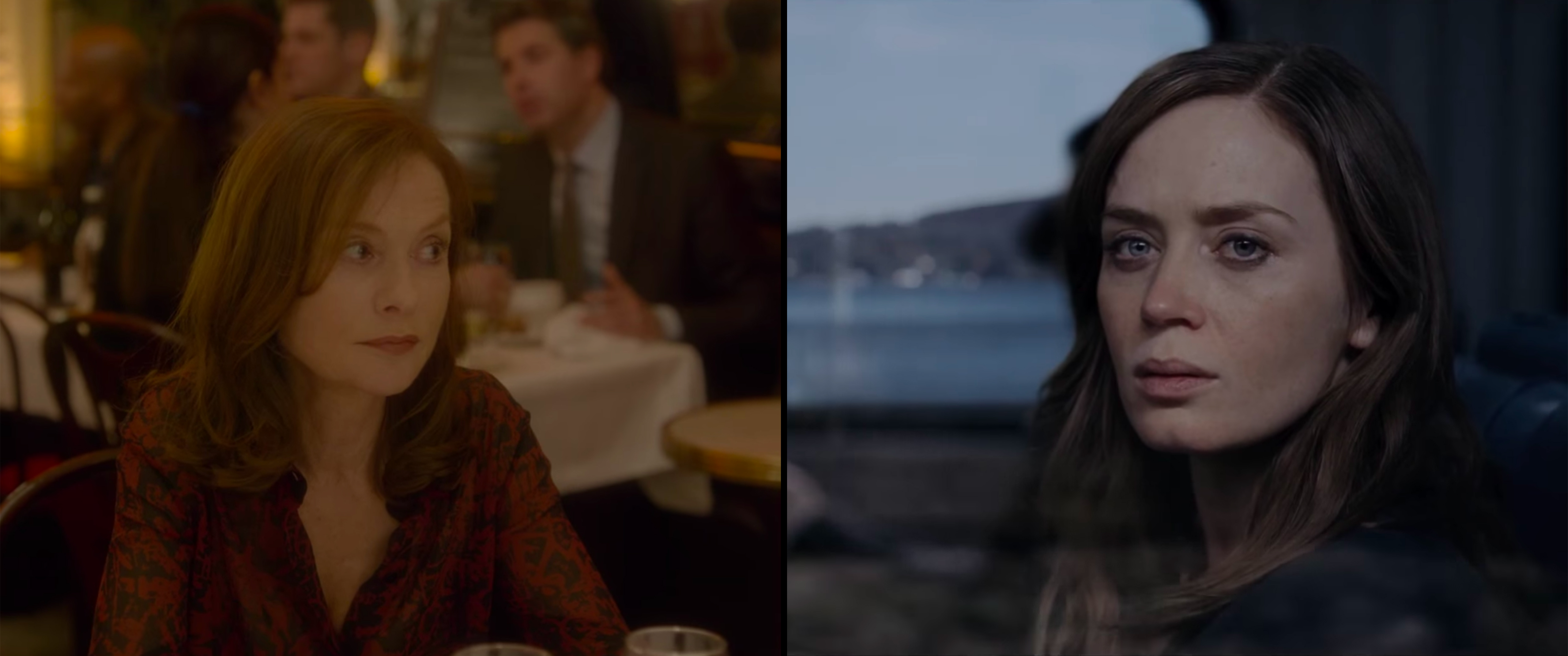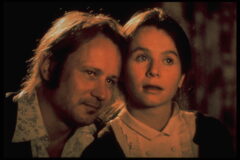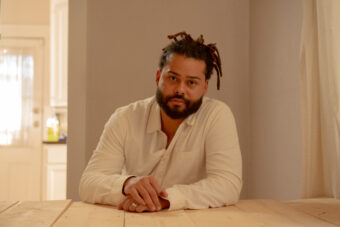I got into a conversation with a fellow critic after seeing Elle, the latest film from director Paul Verhoeven. She didn’t like it as much as I did, though I myself still don’t know exactly how much I like it. She ultimately couldn’t connect with the film, she said, because the actions of its heroine were too alien, too unrecognizable. This is a film, after all, in which the main character discusses her own rape like a particularly inconvenient mosquito bite, then goes on sleeping with the husband of her only close friend.
It’s not outrageously unbelievable material, but I get it–it’s part of the uncanny valley of complex female characters, which dictates that more realistic and lived-in a character feels, the more we expect her to make the choices we agree with. This isn’t as much of an issue for traditional genre films, but films that are marketed to women, that veer more toward domestic drama and relationship comedy, can put us in a different headspace. Fancy questions like “Does this film have artistic truth?” are replaced with “Am I in this movie?” With the rise of marital murder mysteries like Gone Girl and now The Girl on the Train, we get to ask ourselves these questions about women who fake assault, steal babies, and pour handles of vodka into thermoses for on-the-go convenience. All of these are lifestyle options, for sure. But using those stories to simultaneously try to make a statement about the current state of womanhood is never necessary.
In the case of Elle, which begins with a deeply upsetting rape scene, women are dared not to identify with and see themselves in Michele (Isabelle Huppert), the victim of the attack. Over the course of the film Michele shrinks away from that bond they might create with her–first by refusing to report the assault (which feels unimaginable in the moment but is of course standard) and ultimately, in the particular way she deals with her rapist–very much on her own terms, in a way she believes will help her regain a sense of control.
This is precisely why Elle is so engaging and troubling–and at times, dryly hilarious. Michele is not a placeholder for anyone at all. As she sets out on her search for her attacker, Verhoeven pulls back the curtain on the rest of her life in an elegant, densely woven character study. She’s the daughter of a man living out his last days on death row, and she grew up with the scrutinizing gaze of the media on her family following his horrific crimes. When people recognize her and her mother in the street, they pelt them with garbage. She’s now the CEO of an aggressively male-driven video game company, giving impassive notes on how to improve the CGI physics of monster-on-female assault sequences. She’s self-anesthetized, a powerful woman who would scoff at the idea of a “trigger warning.” (By the way, this film obviously comes with an enormous one.) She inspires both loathing and reluctant admiration from her employees, friends, and ex-husband. None of these details literally explain why she makes the unusual choices she makes, rather, they shade those choices in. Michele is not easy to relate to, but she is one of the most convincingly real characters I’ve seen at the movies this year.
The character is grounded by Huppert’s deceptively indifferent performance, and, I suspect, the novel on which it is based (Phillipe Djian’s award-winning, extraordinarily Frenchly titled “Oh…”) It’s hard to achieve this kind of interiority in a visual medium, it’s certainly hard to adapt pages and pages of first-person narrative through actions and images alone. A film adaptation of a novel doesn’t just condense events, it fundamentally changes characters from Feelers and Thinkers to Doers. The responsibility falls on the actor, then, to convey chapters of emotional context with a single look. As Michele, Huppert contains literal volumes.
Emily Blunt tries.
In The Girl on the Train, director Tate Taylor’s adaptation of Paula Hawkins’ novel of the same name, she has the unenviable task of playing Rachel, a character who is very inebriated throughout most of the film, a character who stalks her ex-husband and his neighbor, a character who may or may not have murdered someone. She’s unsure about this last thing because, whoops, she blacked out again! There’s nothing particularly unbelievable about a messy, obsessive alcoholic who keeps showing up in places she’s not welcome, but Erin Cressida Wilson’s screenplay can’t quite shake the feeling that we should be rooting for Rachel–her face is on the poster, after all, and this is supposed to be the new Gone Girl. Wilson forgets that viewers weren’t exactly rooting for Gone Girl’s Amy Dunne either, even as we watched her go like a reckless running back, in slack-jawed fascination. There was something perversely revolutionary about her actions, even if they were absurd, because someone had imagined them into existence. She was another square on the infinite patchwork quilt of the female experience, stitched on with a befuddled shrug: “Well, here’s another thing that you could do. For argument’s sake.”
Rachel’s drunken sleuthing is yet another square, but it’s a hard one to sell, even for a criminally underserved performer like Blunt. The Girl on the Train is primarily told through her eyes, a divorcee who lost her idyllic married life in upstate New York after a series of unfortunate events mostly stemming from her infertility. (That’s a free space in Female Narrative Bingo.) Rachel, now unemployed and mooching off a friend, spends her days riding the Metro North commuter train up and down the Hudson, expensively and rather inefficiently stalking her ex Tom (Justin Theroux,) his new wife Anna (Rachel Ferguson) and their baby; as well as Megan (Haley Bennett) and Scott (Luke Evans) another couple a few houses down whom she believes have the perfect life. One day, while sipping on her booze thermos, she sees Megan cheating on her husband on her porch. She becomes vicariously enraged by this betrayal, gets really drunk and heads for Megan’s house, then blacks out and wakes up, bloody and bruised, to news of Megan’s disappearance.
Let’s set aside, for a moment, the question of taste in making an alcoholic’s blackouts a spooky plot device for a murder mystery. The Girl on the Train–like Gone Girl and Elle, for that matter–is not meant to be a tasteful movie. Rachel, like fellow “girls” Amy and Michele, is a messy woman dealing with her circumstances in an unconventional way. But The Girl on the Train doesn’t have the deftness or the guts to let her be anything other than an audience surrogate, which is incredible given the insanity of her actions. Near the end of the film, after it’s revealed that Tom lied to Rachel about all the horrible things that she did during their marriage while blackout drunk, another woman assures her “you did nothing wrong.” And indeed, it turns out that the source of all discord in the story was a single bad man, whose violent end allows for Rachel to finally kick the booze and pursue her art career.
In the world of books and films like The Girl on the Train, all men are suspect, sure, but all women are eventually victims. Even their titles infantilize them (Gone Girl, The Girl on the Train, The Good Girl, and The Luckiest Girl Alive are all about women in their late 20s and 30s.) This iteration is barely more thoughtful than your standard rape-revenge grindhouse fare, and by the end the audience at my screening was cackling like a midnight movie crowd. At one point, Theroux mutters something about “all you crazy women” that would make for a much more tonally honest tagline (as well as a tagline for some of Verhoeven’s most iconic films).
But the women of The Girl on the Train, and Gone Girl, for that matter, are only crazy insofar as their actions affect others in their lives—their flaws are created specifically to screw everything up for the men who surround them. What makes Elle so confounding, and so compelling, is how Michele is allowed to to screw things up for herself. Both Elle and Michele want the men in their worlds to matter as little as possible, they refuse to align with the word “victim” to their credit and detriment. Elle resists Girl on the Train‘s hand-holding, female-solidarity coda; its feminism is in its very existence. After all, Girl power can only go so far.





